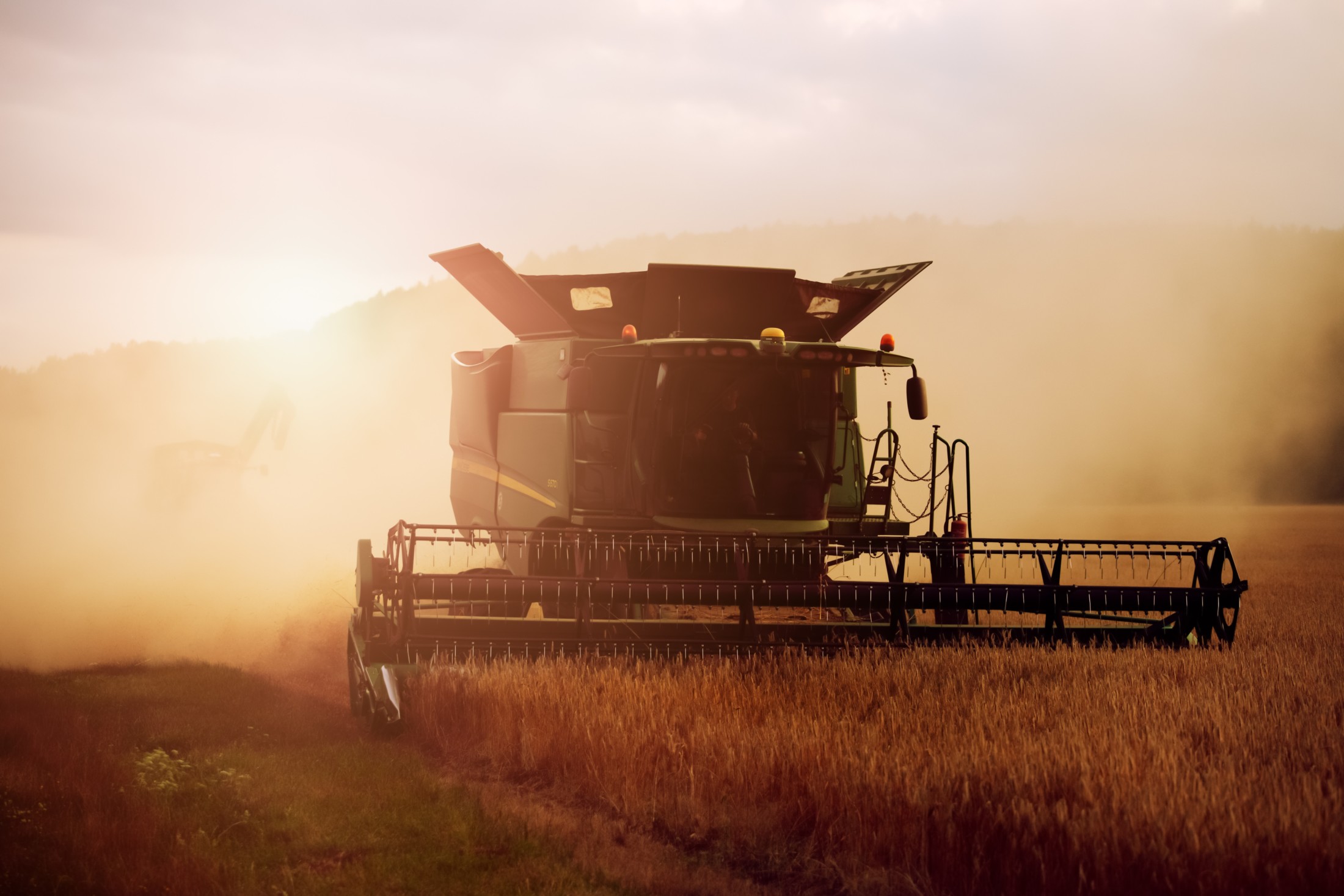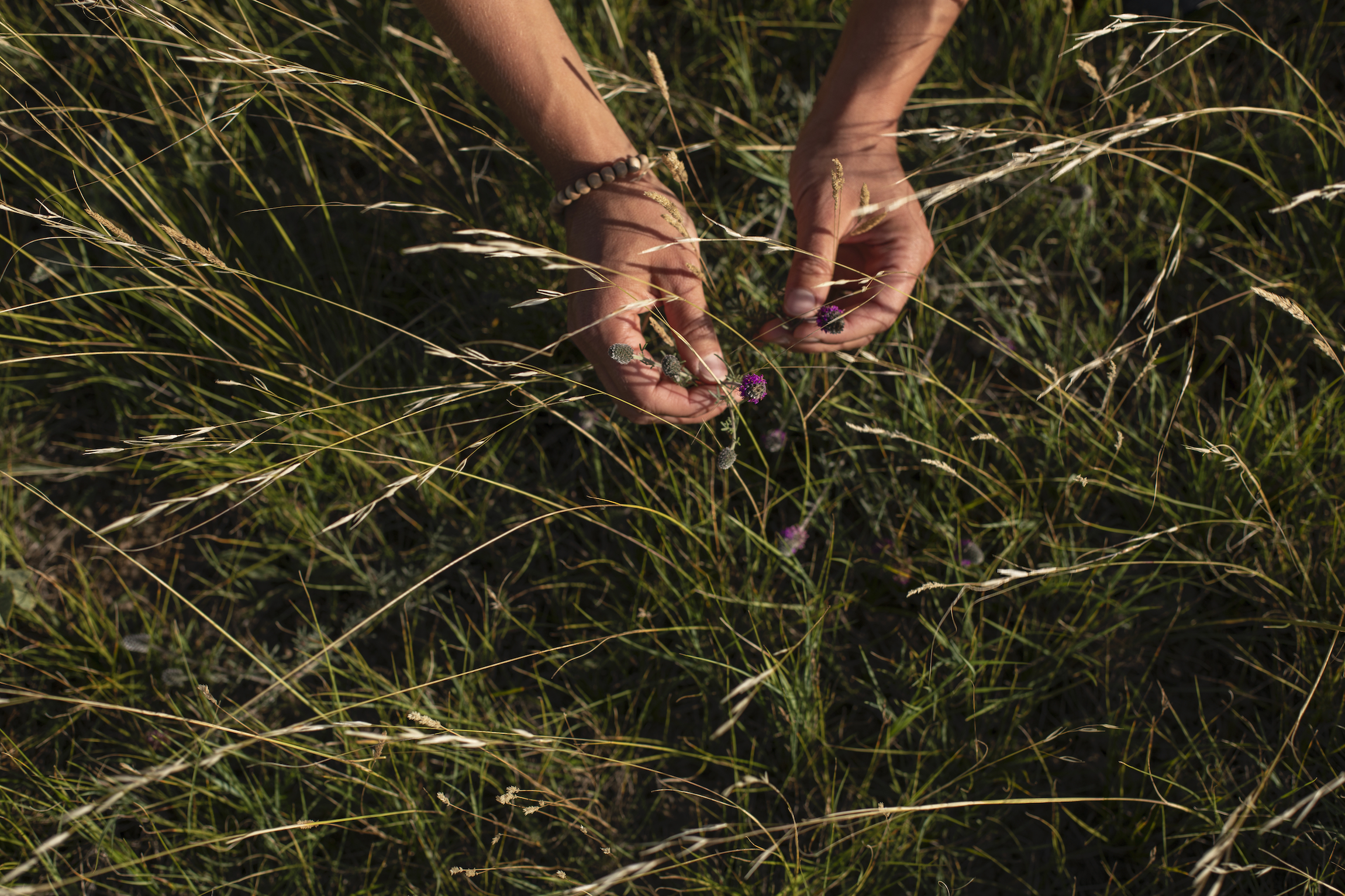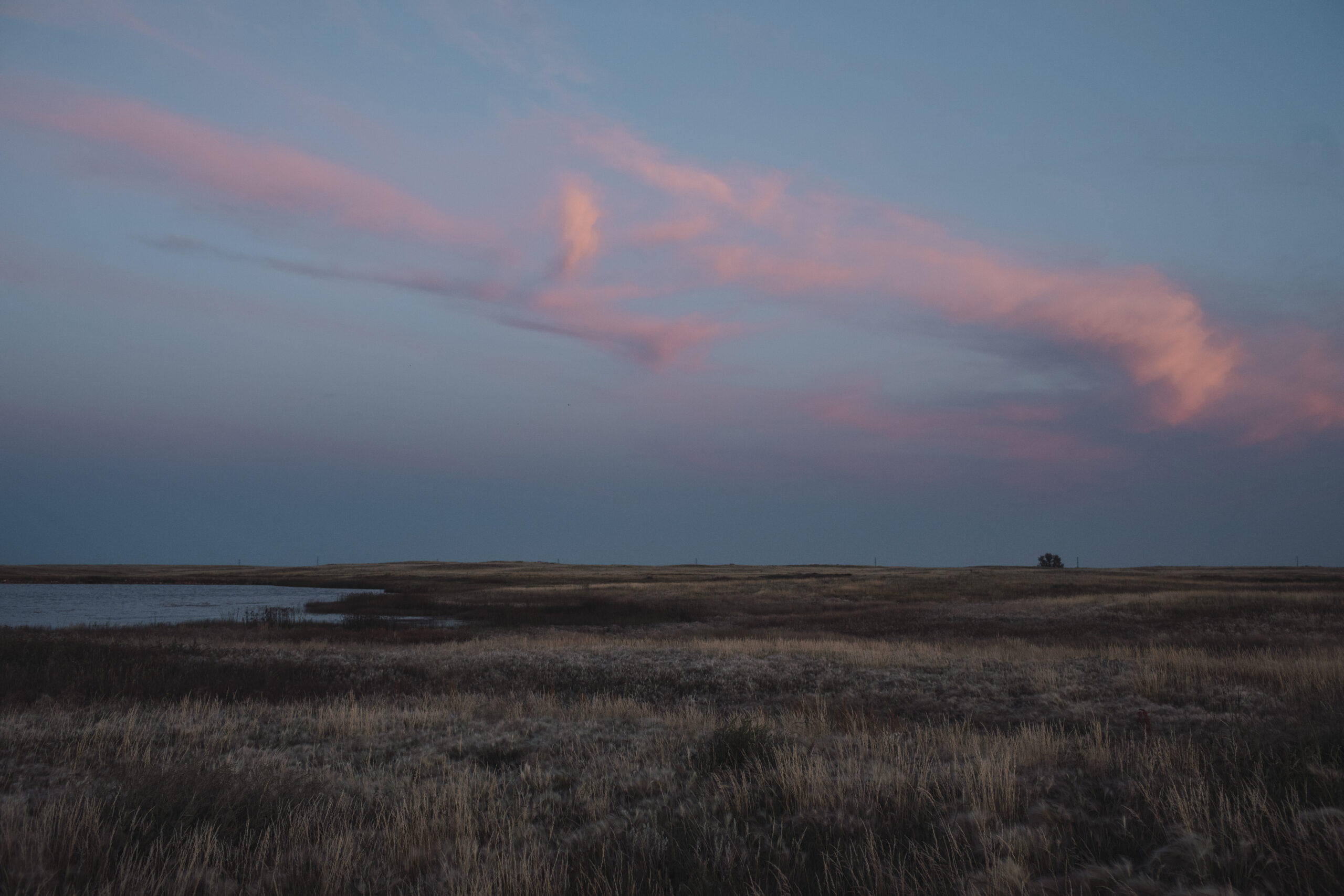
Court halts tailings increase as First Nation challenges B.C.’s decision to greenlight it
Court sides with Xatśūll First Nation, temporarily halting Mount Polley mine waste expansion
Lorne Scott is surrounded.
His relatively small plot of farmland in southeast Saskatchewan is rich with wetlands, scrub and aspen forest in addition to the wheat and oats he cultivates. But all around him are fields that have been smoothed over — cleared and drained of anything that gets in the way of growing a crop.
The farmer, environmentalist and former Saskatchewan cabinet minister says the mountain bluebirds that used to nest in his bird boxes no longer return. Gone too are the familiar sights of killdeer and McCown’s and chestnut-collared longspur. The meadowlarks have dwindled.
The habitat is still there on his land, but Scott wonders if his 640 acres is too small an island to entice the birds back.
It’s not just the birds that are disappearing.
Around Scott’s farm and across Saskatchewan, the farmers are also becoming scarce. Land is increasingly in the hands of fewer people, according to the latest agricultural census — from large investors to farm families that have become significant corporations in their own right.
The dwindling farmers, as well as the homeless birds, are caught up in a contemporary agricultural system that puts enormous pressure on producers to increase the size of their farms, to clear land for the sake of efficiency and to try to pull as much value out of their fields as they can in order to help cover the cost of million-dollar machinery, fuel, herbicides, pesticides, mortgages, rent and more.
The high costs and increasingly high prices for land provide an opening for large investors to gobble up acres, and then rent them out to farmers — providing flexibility to the farmer but generating concern about the future of farming and the health of the land.
André Magnan, a professor of sociology and social studies at the University of Regina researches investor purchases of farmland in the Canadian Prairies and says the phenomena started taking off around 2005.
“Somewhere close to a million acres in Saskatchewan alone, is now investor-owned,” Magnan says.
There are approximately 41.4 million acres of farmland in Saskatchewan, according to the provincial government.
Breaking down who owns what, however, can be challenging. Farm families will cobble together land under various corporate structures and various numbered companies can all have a stake in continuous parcels of land.
Melissa Davidson, a researcher who wrote her master’s thesis on the impacts of farm ownership concentration in Saskatchewan, says it’s difficult to understand the extent of investor ownership of land unless those investors declare their holdings.
“It’s actually quite difficult to make those connections between land that’s titled differently,” she says.
At its core, investor interest in farmland means there is a market logic at play that wasn’t necessarily there before, Magnan says. Farmers have always minded their bottom lines, of course, but now the land is increasingly seen as an investment to be bought and sold as speculators circle.
Some companies will cobble together a portfolio of land and then invite investors to put their money into the fund, much like a mutual fund, while others will be run more as a real estate holding company.
The province prevents foreign ownership of farmland, but does allow investment from across Canada. Some investors, like Area One Farms, are based in Toronto, while others, like Andjelic Lands Inc., are registered in Saskatchewan, but wholly owned by Alberta-based Robert Andjelic.
As investors move in, a connection between the owner and the land can be severed.
“They prefer, for the most part, to rent it out to local operators, and those local farmers then assume all the production-side risks, and the investors benefit from land appreciation over time, as well as that steady income that it can generate by renting it out,” Magnan says.
There is a certain logic to the arrangement.

A new combine with all the fixings, for example, can cost over $1 million, not to mention the gas to keep it going. In order to ensure that investment is worth it, farmers need to cover a lot of ground, maximize the use of their equipment and pull out a lot of crops, but buying that much land can be prohibitively expensive.
Renting land, whether it be from a neighbour or an investor, can make a lot of sense. The owner of the land earns income and the farmer gets access to more land without a mortgage.
Magnan, however, points to two main issues that flow from the arrangement: it can take ownership out of local hands, which can impact communities, and it can increase pressure to earn more from the land.
“Very often what it looks like is maximizing the number of farmable acres on your land, and that means clearing out brush, it means filling in wetlands, essentially kind of homogenizing the land, flattening the land, so that every square metre can be farmed.”
Across Saskatchewan in 2021, land remained relatively cheap compared to soaring prices elsewhere in Canada. Ontario, for example, requires significant financial heft in order to invest in farmland — thanks in part to residential developers in more urban areas — with prices increasing over 22 per cent between 2020 and 2021.
And while the comparative cost of land in Saskatchewan is likely responsible for fuelling investor interest, particularly in the recent era of low interest rates, it doesn’t mean Saskatchewan is cheap. Especially not if you’re buying thousands of acres.
The average price for land across the province increased by 7.4 per cent in 2021 — from an increase of 0.4 per cent on the lower end in the southwest region to a 14.7 per cent increase in the southeast — according to Farm Credit Canada’s most recent farmland value report.
An acre of farmland in Saskatchewan costs anywhere from $1,000 to $5,500.
“Demand was fairly high and supply just wasn’t able to keep up,” Chris Prejet, an appraiser with Farm Credit Canada, says of the main driver of price increases in Saskatchewan last year.
Low interest rates and high commodity prices meant increased competition for farmland.
Cathy Holtslander, the director of policy and research at the National Farmers Union, says a lot of that buying and selling puts land prices beyond the ability of farmers to turn a profit from their crops, feeding into the cycle of farmland as investment.
“When people buy land on speculation, they are not actually so interested in how much the crops are worth that can be produced on it over time,” Holtslander says.
“It’s like, how much will I be able to sell this for in the future?”
Outstanding farm debt in Saskatchewan, including mortgages and other debts totalled $18.6 billion in 2021, according to Statistics Canada — over $4 billion more than it was in 2016.
Holtslander says having that sort of debt hanging over your head reduces your options and your creativity when it comes to operating a farm. She says the high costs and the debt is sucking the life out of farming communities to serve financial interests.
“So there is a desire for farmers who are leaving farming to get a high enough price when they sell their land to finance their retirement,” Holtslander says.
“But there’s also the need for the newer farmers, young farmers getting into farming to be able to afford, not only to buy the land, but everything else that they need to set up a farm.”
Increasingly, those two ends of the spectrum are at odds, with owners reluctant to sell off small parcels of land when they’re ready to move on. And if maximizing profits off the sale of the land is the main goal, natural habitat stands in the way.
“Generally speaking, you’d probably see a higher value with a bare quarter, a full quarter of cultivated land versus one that might have some sloughs or some potholes, that kind of thing,” Prejet says.
“Just for efficiency of farming, that kind of thing might draw a higher value.”
Which brings us back to the birds.
The landscape in southern Saskatchewan is pretty flat. It’s the prairies, afterall. But it’s not uniform. The province is pockmarked with wetlands, and was once covered in brush and the surprising hues and variety of native grasslands. Aspen forests and shelterbelts of trees emerge from the fields here and there, while rivers and lakes carve deep cuts into the plains. There’s even sand dunes not far from the ice-age oddity of the forested Cypress Hills.
But it’s the grasslands, and the wetlands that dot them, which are most at risk from contemporary farming — due in part to a lack of strong regulatory enforcement.
“The International Union for the Conservation of Nature has confirmed that the temperate grasslands biome, which includes southern Saskatchewan and the prairies, is the most altered and the most threatened and the most endangered biome on the planet — far more so than coral reefs or Amazon rainforest,” Scott says from his island of habitat which he tends with 50-year-old equipment.

Neither the province nor the federal government currently tracks the loss of grasslands in Saskatchewan, so it can be difficult to grasp what’s at stake. The World Wildlife Fund, however, puts out an annual Plowprint Report, which monitors losses across the great plains of North America.
The most recent report shows almost 2.6 million acres of native grasslands were converted to croplands in 2019 — 586,000 acres in the northern great plains that stretch from Nebraska to Alberta and Saskatchewan.
Insects, birds and animals disappear alongside their habitat, and the loss of deep roots from grasslands impacts flooding, soil health and carbon emissions.
“Our best guess as to [grassland that’s] remaining in Saskatchewan is somewhere between 8.9 and 12 per cent,” Trevor Herriot, an author and advocate for grasslands in Saskatchewan, says. “But the official percentage that the government and some [non-governmental organizations] continue to use is 20 per cent.”
Those estimates date from the ’90s, according to Herriot.
“When you don’t know what you’ve got, you don’t know how much you’re losing every year,” he says.
There’s a similar lack of specific data when it comes to wetlands.
Ducks Unlimited estimates 70 per cent of wetlands have already been lost in southern Canada, but says the lack of accurate tracking means those losses are likely higher.
The Water Security Agency, which regulates water in Saskatchewan, says it is working on an inventory of existing wetlands in the agricultural region of the province, covering 41.4 million acres, and has documented just under 70 per cent of the region as of March 31.
Sean Osmar, a spokesperson for the agency, says they hope to complete an inventory of 86 per cent of the agricultural region by 2023-24. The agency did not respond when asked whether it could share data from the inventory to date.
The province does not have a wetlands policy, but Osmar says it is working on an agricultural water management strategy that will address impacts of draining wetlands on habitat and water quality. He says the province will start looking into a broader wetlands protection policy once that is complete.
Draining wetland on private property in Saskatchewan does legally requires a permit from the Water Security Agency, but critics say that is not often the case.
The Provincial Auditor of Saskatchewan, in a 2018 report, found the majority of drainage works in the province are unapproved.
“Saskatchewan has over 1,800 miles of organized drainage ditches, draining an estimated 4.5 million acres of farmland,” reads the report. “The Water Security Agency estimates approximately 1.6 million to 2.4 million acres of land have unapproved drainage works.”
Those unapproved works can contaminate waterways with fertilizer and other runoff from farms, degrading water and leading to things like toxic algae blooms.
The agency says it prefers to work with landowners rather than impose penalties and did not respond when asked if it could provide data on how many times it did impose fines on violators.

When it comes to clearing land, a spokesperson for the Ministry of Agriculture said part of the government’s growth plan, launched in 2019, is to increase the sustainability of agriculture and is looking to support and reward producers who “provide habitat by maintaining natural areas.”
Crown land that is sold may also include a conservation easement that protects natural cover and habitat in perpetuity, unless otherwise approved by the ministry, according to spokesperson Jamie Shanks.
“It’s sad, and unfortunately the province here has no inclination whatsoever to put any restrictions or encourage any retention of natural landscape on private lands,” Scott says.
“In fact, they’re working on an agriculture water management policy as if agriculture is the only thing that water impacts, and there’s no requirement at all to preserve one per cent of the wetlands in these drainage projects.”
When he was environment minister for the NDP government from 1995 to 1999, he said agriculture was king and change was difficult. It’s only gotten worse in his mind.
Money, he says, is everything.
The land that surrounds Scott is owned by someone whose name comes up regularly when discussing land ownership and habitat — Robert Andjelic.
Andjelic Lands, of which Robert Andjelic is the sole owner and director, owns over 225,000 acres, more farmland than anyone else in Saskatchewan, and rents it to tenant farmers.
On the company’s website, it boasts of how it has improved almost all of the land in a 22,000 acre area in eastern Saskatchewan by clearing it of “fence rows, trees, bush, caragana rows, rock piles” and breaking up the soil in preparation for crops.
It also maintains 40,000 acres in a natural state, spread over its vast holdings.
In an interview with The Narwhal from his home in Millarville, Alta., Andjelic says he got into farming after he sold off his real estate holdings in Manitoba and got restless when he tried to retire and soured on commodity trading.
He says Saskatchewan is rich in land and water, things that can’t simply be duplicated elsewhere, and he saw the potential for investment. But he bristles at the suggestion he’s in it for the short-term and argues land improvements are an essential part of contemporary farming.
“That’s the way they’re going to have to go, you’ve got no choice,” he says. “In order to stay in business, you have to grow to a certain size, and the equipment and your investment into that equipment dictates that.”

He says clearing the land means more efficient use of large equipment, reducing the number of times the large vehicles need to travel a field, saving fuel and, therefore, reducing emissions.
Andjelic rents land to allow farmers to expand as needed and says he helps younger farmers expand without having to buy acres outright.
Competition, he says, is now global and agriculture is going to be increasingly strained with the impacts of climate change and geopolitics — including the current war in Ukraine.
Getting it wrong, or shutting down the industry through overregulation has a more severe impact than in other industries, he says, because not producing enough food is a death sentence for many.
There is currently more than enough food produced to feed the global population, according to the United Nations Environment Program, but much of it is wasted. A toxic mix of inflation and poverty is also driving hunger across the world, as the poorest either cut back or can’t afford to eat.
Confronting a system that puts pressure on farmers to expand and to clear the land is a challenge.
“There are no easy solutions, of course, because we’re looking at a civilization-ranging problem here, something of massive scale and complexity. And it’s an ecological trap that we’re all living in,” Herriot says.
“There’s no way we can blame or demonize farmers who are the people who are most caught up in this.”
In this more libertarian corner of the country, government regulations might not be welcome. Plus, Herriot says, farmers are under enough strain from the system they’re trapped in and “don’t need more headaches.”
In the U.S. there are incentive programs that pay farmers to keep natural habitats on their land, but the practice is controversial and isn’t necessarily a long-term solution as contracts expire and farmers face pressure to expand crop land. Conservation easements in the case of Saskatchewan can protect some pockets.
The National Farmers Union has proposed things like community land banks, community-based financing options, government support for direct sales that bypass financial institutions and to remove tax advantages for investment companies who profit from farmland.
Holtslander points to Prince Edward Island, which has stringent ownership rules including a cap on how many acres an individual farmer or corporation can own, as an example of what can be done.
Human health, the health of the land, food, energy, climate change, biodiversity collapse — all of those factor into the debate around what to do with agriculture, Herriot argues, and highlight the urgency of finding solutions.
“The sooner we get to the table and start talking about it and find out what [farmers] think would work and what we can somehow afford to do … the better because just staying in our little silos — conservationists, environmentalists pushing for stronger regulations, farmers pushing against that and asking for payments — it’s just not working,” he says.
“We have to come up with some other solution together.”
Get the inside scoop on The Narwhal’s environment and climate reporting by signing up for our free newsletter. On a warm September evening nearly 15...
Continue reading
Court sides with Xatśūll First Nation, temporarily halting Mount Polley mine waste expansion

Break out the champagne: Emma’s storied life and leadership in journalism has earned her the...

How can we limit damage from disasters like the 2024 Toronto floods? In this explainer...
